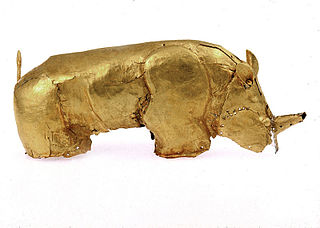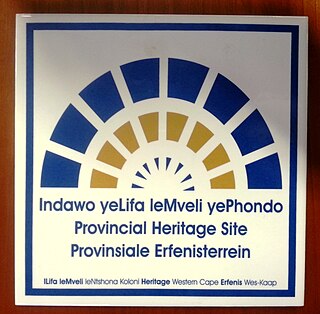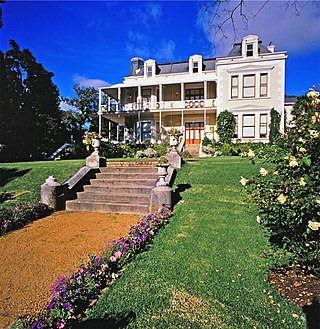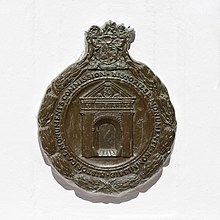
South Africa switched to a closed numbering system effective 16 January 2007. At that time, it became mandatory to dial the full 10-digit telephone number, including the zero in the three-digit area code, for local calls. Area codes within the system are generally organized geographically. All telephone numbers are 9 digits long, except for certain Telkom special services. When dialed from another country, the "0" is omitted and replaced with the appropriate international access code and the country code +27.
The South African Planning Institute was formed on 1 July 1996 following the amalgamation of the South African Institute of Town and Regional Planners and the Development Planning Association of South Africa.
The National Archives and Records Service is an institutional network, operating on a centralised and decentralised provincial basis under central government control. The National Archives and Records Service of South Africa was established by passing of the National Archives and Records Service of South Africa Act in 1996.

Section 27 of the National Heritage Resources Act (NHRA) of South Africa provides for places of historic or cultural importance to be designated national heritage sites. This came into effect with the introduction of the Act on 1 April 2000, when all former national monuments declared by the former National Monuments Council and its predecessors became provincial heritage sites as provided for in Section 58 of the Act.

The South African Heritage Resources Agency (SAHRA) is the national administrative body responsible for the protection of South Africa's cultural heritage. It was established through the National Heritage Resources Act, number 25 of 1999 and together with provincial heritage resources authorities is one of the bodies that replaced the National Monuments Council.

Heritage objects in South Africa are objects or collections formally declared as such by the South African Heritage Resource Agency in order to control their export. Declaration does not restrict the sale or ownership of the objects.

Provincial heritage sites in South Africa are places that are of historic or cultural importance within the context of the province concerned and which are for this reason declared in terms of Section 28 of the National Heritage Resources Act (NHRA) or legislation of the applicable province. The designation was a new one that came into effect with the introduction of the Act on 1 April 2000 when all former national monuments declared by the former National Monuments Council and its predecessors became provincial heritage sites as provided for in Section 58 of the Act.
There have been a number of political assassinations in post-apartheid South Africa. In 2013 it was reported that there had been more than 450 political assassinations in the province of KwaZulu-Natal since the end of apartheid in 1994. In July 2013 the Daily Maverick reported that there had been "59 political murders in the last five years". In August 2016 it was reported that there had been at least twenty political assassinations in the run up to the local government elections on the 3rd of August that year, most of them in KwaZulu-Natal.
Water Boards play a key role in the South African water sector. They operate dams, bulk water supply infrastructure, some retail infrastructure and some wastewater systems. Some also provide technical assistance to municipalities. Through their role in the operation of dams they also play an important role in water resources management. The Water Boards report to the Department of Water Affairs (DWA). There are 13 Water Boards in South Africa, together indirectly serving more than 24 million people in 90 municipalities in 2005, or about half the population of South Africa.

Artillery Memorial, Cape Town was erected in memory of the gunners who fought for South Africa during World War I. The memorial, which forms part of the Delville Wood Memorial, is located in the Company's Garden, Cape Town, and was strategically established to commemorate South Africa's artillery soldiers who fell in battle. Of those who volunteered to fight during the war, 5800 were white South African, amongst whom 15% were Dutch and 85% English. An estimated 2536 of these men were killed in the Deville Wood battle in Europe. The Artillery Memorial, an authentic cannon facing east towards the National Gallery, proudly honors South Africa's heavy artillerymen. Inscribed on it are the names of the officers, N.C.O.'s and men of the South African artillery who fell in the Great War (1914–1918).


The National Monuments Council (NMC) was the national heritage conservation authority of South Africa, and therefore also of Namibia, during the major part of the apartheid era. It was the successor body to the Historical Monuments Commission and became known principally for its declaration of several thousand national monuments. It came into being through the promulgation of the National Monuments Act of 1969 and ceased to exist on 31 March 2000 when it was replaced by SAHRA and the provincial heritage resources authorities established in terms of the National Heritage Resources Act of 1999.
A provincial heritage resources authority (PHRA) is a government agency established at provincial level in South Africa and is responsible for the management of immovable heritage. In some instances, they are also responsible for moveable heritage, interpretation centres and museums.

Hawthorndon House is a double-storeyed house on Herschel Walk in the suburb of Wynberg in Cape Town, South Africa. The house likely dates from 1683, but was substantially rebuilt in the French Victorian style in 1881 by a Capt. John Spence. It was bought by the Randlord Sir J.B. Robinson in 1891 and was where he lived until his death in 1927. Count Natale Labia, grandson of J.B. Robinson, donated Hawthornden to what is now the Government of the Western Cape Province in 1978, but will continue to live there during his lifetime.
The marine protected areas of South Africa are in an area of coastline or ocean within the exclusive economic zone (EEZ) of the Republic of South Africa that is protected in terms of specific legislation for the benefit of the environment and the people who live in and use it. An MPA is a place where marine life can thrive under less pressure than unprotected areas. They are like underwater parks, and this healthy environment can benefit neighbouring areas.
The 2020–21 CSA 3-Day Provincial Cup was a first-class cricket competition that took place in South Africa during February and March 2021. Easterns and KwaZulu-Natal were the defending champions, after the title was shared due to the COVID-19 pandemic.











